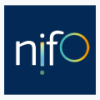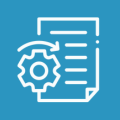WHAT IS IT?
The European Interoperability Framework (EIF) is part of the Communication (COM(2017)134) from the European Commission adopted on 23 March 2017. The framework gives specific guidance on how to set up interoperable digital public services.
HOW HAS IT EVOLVED?
This version of the EIF has evolved since it was first adopted in 2004 and then revised in 2010. Indeed, as the field of information technology has developed and new EU policies have emerged, the EIF needed an overall revision after six years of existence. The framework had to better react on emerging technological trends like open data and cloud computing. It also needed to be fully aligned with the most recent EU policy development.
NEW SPECIFICITIES
The framework adopted in 2017 has put more emphasis on how interoperability principles and models should be applied in practice by the European countries. For this reason, the number of recommendations has increased from 25 to 47. In addition, these have been made more specific in order to facilitate their implementation by the countries, with a stronger focus on openness and information management, data portability, interoperability governance, and integrated service delivery.
Concretely, the new second version of the EIF offers public administrations 47 recommendations on how to improve the governance of their interoperability activities, establish cross-organisational relationships, streamline processes supporting end-to-end digital services, and ensure that both existing and new legislation do not compromise interoperability efforts.
BENEFITS OF THE EIF
The digitalisation of public administrations has become a priority for most EU countries. With the new second version of the EIF, published in 2017, these countries can follow the same approach when making their public services available online, which ensures that services are available and accessible to all, not only within national borders, but also across countries and policy areas.
With the EIF, it is hoped that countries will apply interoperability in practice. This will ensure that public administrations save time, reduce costs, increase transparency, and improve the quality of the services they offer their citizens and businesses.

Do you want to learn more about the latest version of the EIF? Have a look at these resources!







